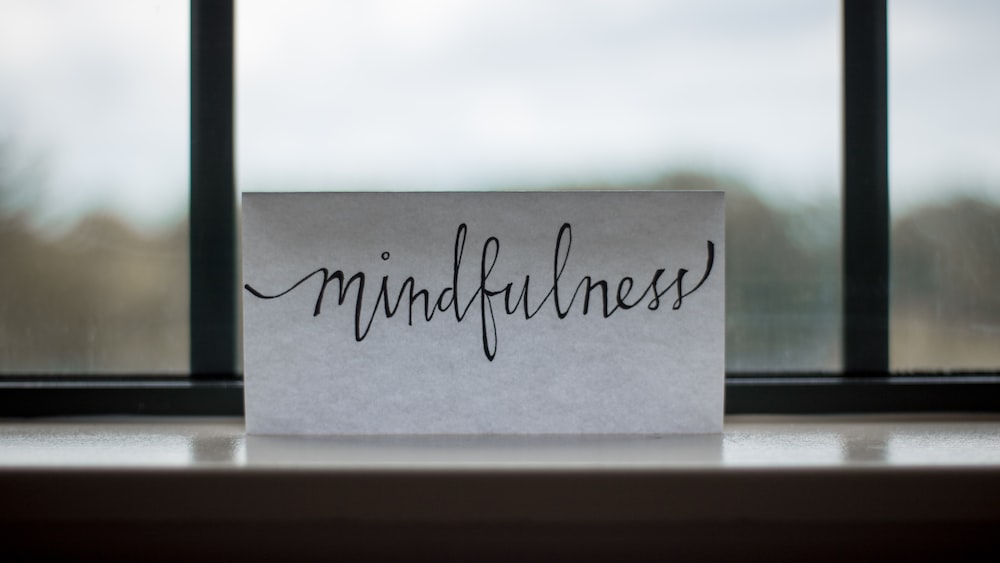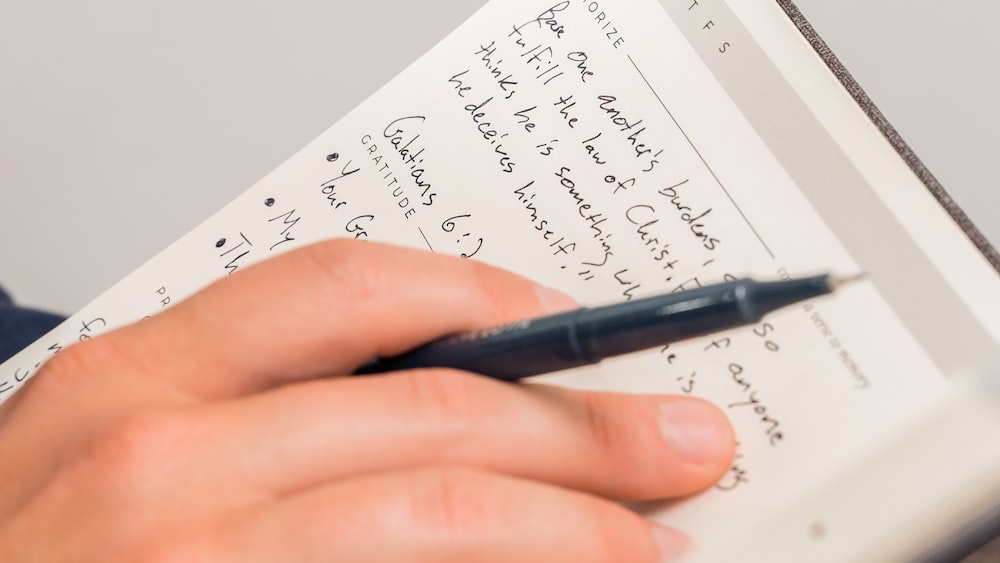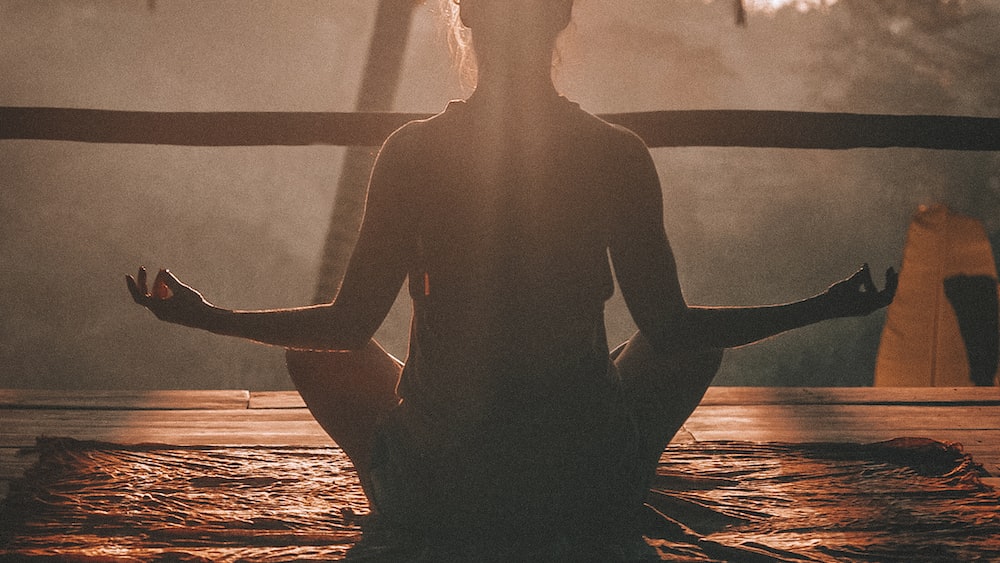15 Simple Daily Mindfulness Tips For A Calmer You
Welcome to the world of self-improvement and the pursuit of a calmer, more mindful you! In today’s fast-paced society, it’s easy to get caught up in the whirlwind of tasks, responsibilities, and distractions that are constantly competing for our attention. But what if I told you that there’s a simple way to bring some peace and tranquility to your life, even amidst the chaos? That’s right, my friend – mindfulness is the key!
Mindfulness is a practice that has been around for centuries, but it’s become increasingly popular in recent years due to its numerous mental and physical health benefits. And the best part? It’s not some esoteric, complicated practice that requires years of study and dedication. In fact, incorporating mindfulness into your daily routine can be as simple as following a few easy tips and techniques.
In this article, we’ll explore the importance of daily mindfulness, learn what mindfulness is, and dive into 15 simple daily mindfulness tips that you can start incorporating into your life right away. So, sit back, relax, and let’s embark on this journey together!
The Importance of Daily Mindfulness
Daily mindfulness practice is essential for our mental and emotional well-being. It helps us cultivate a sense of inner peace, which in turn, can improve our overall quality of life. But what exactly is mindfulness, and why is it so important?
What is mindfulness?
Mindfulness is a mental state achieved by focusing one’s awareness on the present moment, while calmly acknowledging and accepting one’s feelings, thoughts, and bodily sensations. In simpler terms, it’s the practice of being fully present and engaged in the here and now, without letting our minds wander or become overwhelmed by external stimuli.
Incorporating mindfulness into our daily lives can be a powerful tool to help us navigate the ups and downs of life, as well as improve our mental, emotional, and physical well-being.
Incorporating mindfulness into our daily lives can improve our mental, emotional, and physical well-being by helping us be fully present and engaged in the here and now.
Benefits of daily mindfulness practice
The benefits of daily mindfulness practice are numerous and well-documented. Research has shown that mindfulness can:

- Reduce stress and anxiety: Practicing mindfulness helps us to become more aware of our thoughts and emotions, allowing us to manage them more effectively and reduce the impact of stress and anxiety on our lives.
- Improve focus and concentration: By training our minds to stay present and engaged, we can develop a greater ability to concentrate and maintain focus on the task at hand.
- Enhance emotional intelligence: Mindfulness helps us to become more in tune with our emotions, allowing us to navigate our relationships and social interactions with greater empathy and understanding.
15 Simple Daily Mindfulness Tips
With a better understanding of what mindfulness is and its benefits, let’s dive into 15 simple daily mindfulness tips that can help you foster a calmer, more centered version of yourself.
1. Morning mindfulness routine
Starting your day with a mindfulness routine can set the tone for the rest of your day. Begin by taking a few moments to focus on your breath as soon as you wake up. Before reaching for your phone or engaging with any distractions, take this time to connect with your body and mind.
Next, consider incorporating a brief meditation practice into your morning routine. This can be as simple as sitting quietly for a few minutes, focusing on your breath, and setting an intention for the day. By starting your day with mindfulness, you’ll lay the foundation for a more focused and present day.
2. Mindful breathing exercises
One of the easiest and most effective ways to practice mindfulness is through mindful breathing exercises. The beauty of these exercises is that they can be done anytime, anywhere – whether you’re at your desk at work, sitting in traffic, or waiting in line at the grocery store.
To practice mindful breathing, simply focus your attention on your breath as it moves in and out of your body. Feel the sensation of the air entering your nostrils, filling your lungs, and then leaving your body as you exhale. If your mind begins to wander, gently bring your focus back to your breath.
3. Mindful eating
Mealtime is an excellent opportunity to practice mindfulness. Instead of rushing through your meals or eating while distracted, try to savor each bite and truly experience the flavors, textures, and aromas of your food.
Start by taking a moment to express gratitude for your meal, acknowledging the time and effort that went into its preparation. Then, as you eat, pay attention to the sensations of chewing and swallowing, and be fully present with each mouthful. This practice not only enhances the enjoyment of your meal but can also promote healthier eating habits and digestion.
Savor each bite of your meals and practice mindfulness by paying attention to the flavors, textures, and aromas, which can promote healthier eating habits and digestion.
4. Mindful walking
Going for a walk is a great way to clear your mind and practice mindfulness. As you walk, try to focus on the sensations of your feet hitting the ground, the rhythm of your breath, and the feeling of the air against your skin.
If your mind begins to wander, gently bring your attention back to the present moment and the sensations of walking. This practice can be especially beneficial when you’re feeling overwhelmed or stressed, as it helps to ground you in the present moment and break the cycle of negative thoughts.
5. Focusing on your senses
Another practical way to cultivate mindfulness is by focusing on your senses. Throughout your day, take a few moments to pause and tune into the sensations around you – what do you see, hear, smell, taste, and feel?
By intentionally engaging with our senses, we become more aware of our surroundings and can better appreciate the beauty and wonder of the world around us. This practice can be especially helpful when you’re feeling disconnected or overwhelmed, as it helps to ground you in the present moment.
6. Mindful communication
Mindful communication is a cornerstone of healthy relationships and a key element of mindfulness practice. This involves actively listening to others, being fully present during conversations, and responding with empathy and understanding.

To practice mindful communication, try to eliminate distractions when engaging with others, maintain eye contact, and focus on what the other person is saying. By doing so, you’ll not only strengthen your relationships, but you’ll also cultivate a greater sense of connection and compassion in your daily interactions.
7. Mindful listening
Mindful listening is an incredibly powerful tool that can not only improve your relationships but also help to create a calmer and more focused mind. To practice mindful listening, simply give your full attention to the person speaking, without interrupting or thinking about your response. Pay attention to their tone, facial expressions, and body language, and pause before responding. This practice allows you to truly connect with the person and fosters a deeper understanding of their thoughts and feelings.
Remember, when we listen mindfully, we’re not just hearing the words someone says – we’re also tuning into the emotions behind their words. This can lead to more meaningful conversations and stronger connections with the people around you. So, next time you engage in a conversation, challenge yourself to listen mindfully and see the difference it makes.
8. Mindfulness during daily chores
Incorporating mindfulness into your daily chores can transform mundane tasks into opportunities for stress relief and mental clarity. Instead of rushing through chores, try to focus on the sensations and experiences of each task. Feel the warm water as you wash the dishes, or the texture of the fabric as you fold laundry. By fully engaging with the task at hand, you can turn a potentially mindless activity into a chance to practice mindfulness and find a sense of calm within the chaos of your day.
Here are some ideas for practicing mindfulness while doing chores:
- Washing dishes: Focus on the sensation of the water and the movements of your hands.
- Vacuuming: Pay attention to the sound of the vacuum and the feeling of the floor beneath your feet.
- Folding laundry: Notice the textures and smells of the freshly washed clothes.
9. Mindful breaks at work
Taking mindful breaks at work can greatly improve your productivity and overall well-being. Instead of scrolling through social media or checking emails during your break, try engaging in a short mindfulness practice. This can be as simple as closing your eyes and focusing on your breath for a few minutes, or taking a short walk outside to connect with nature.
Some other mindful break ideas include:
- Stretching or doing a quick yoga sequence at your desk
- Listening to a guided meditation or calming music
- Enjoying a mindful snack, savoring each bite
Engaging in a short mindfulness practice during work breaks can improve productivity and well-being.
10. Mindful exercise
Mindful exercise is all about being present and fully engaged in the physical activity you’re doing. This can help you get more out of your workout and improve your mental well-being. To practice mindful exercise, choose an activity you enjoy and focus on the sensations your body experiences as you move. Whether you’re lifting weights, practicing yoga, or going for a run, pay attention to how your muscles feel, your breath, and your overall energy levels.
Combining mindfulness with exercise has numerous benefits, including:
- Improved focus and concentration
- Reduced stress and anxiety
- Greater enjoyment of the activity
Give mindful exercise a try during your next workout and see the difference it makes in your physical and mental well-being.
11. Gratitude practice
Practicing gratitude is a fantastic way to cultivate a positive mindset and improve your overall well-being. By taking the time to reflect on the things you’re grateful for, you can shift your focus from what’s wrong in your life to what’s going well. Start by setting aside a few minutes each day to write down or mentally list three things you’re grateful for. These can be big or small, and they don’t have to be related to your current situation.
Some ideas for gratitude practice include:

- Keeping a gratitude journal
- Sharing your gratitude with a friend or family member
- Writing thank you notes to people who have made a positive impact in your life
12. Mindful journaling
Mindful journaling is a powerful tool for self-reflection and personal growth. By writing down your thoughts and feelings, you can gain insight into your emotions and identify patterns and habits that may be causing stress or holding you back. To practice mindful journaling, set aside a few minutes each day to write freely about your thoughts, emotions, and experiences.
Mindful journaling tips:
- Write without judgment or self-criticism
- Use prompts to guide your writing, such as “Today, I felt…”
- Reflect on your entries regularly to identify patterns and areas for growth
13. Body scan meditation
A body scan meditation is a simple yet powerful mindfulness technique that can help you become more in tune with your body and its sensations. To practice a body scan, find a quiet space where you can sit or lie down comfortably. Close your eyes and take a few deep breaths, then begin to focus your attention on each part of your body, starting with your toes and working your way up to the top of your head.
As you focus on each body part, notice any sensations, tension, or discomfort, and try to release any tension with each exhale. This practice can help you become more aware of the connection between your mind and body and promote relaxation and stress relief.
14. Loving-kindness meditation
Loving-kindness meditation is a practice that involves focusing on cultivating feelings of love, compassion, and goodwill toward yourself and others. To practice loving-kindness meditation, find a quiet, comfortable place to sit, and close your eyes. Begin by focusing on yourself and silently repeating phrases such as “May I be happy, may I be healthy, may I be safe, may I be at ease.”
Once you feel a sense of warmth and compassion toward yourself, gradually expand your focus to include others, starting with loved ones and eventually extending to all beings. This practice can help to build empathy, improve your relationships, and create a more positive mindset.
15. Bedtime mindfulness routine
A bedtime mindfulness routine can greatly improve your quality of sleep and help you unwind at the end of the day. Establishing a consistent mindfulness practice before bed can signal to your body that it’s time to relax and prepare for sleep. Some ideas for a bedtime mindfulness routine include:
- Practicing gentle yoga or stretching
- Engaging in a body scan or guided meditation
- Reflecting on the day’s events and expressing gratitude for the positive moments
Tips for Making Mindfulness a Habit
To make mindfulness a habit, it’s important to establish a consistent routine and find practices that resonate with you. Setting realistic goals, creating mindfulness prompts, finding accountability partners, and joining a mindfulness community can all help you stay committed to your practice and experience the many benefits of daily mindfulness.
Setting realistic goals
When it comes to incorporating mindfulness into your daily life, setting realistic goals is essential. Start small and gradually increase the time you spend practicing mindfulness each day. For example, you could begin with just 5 minutes a day and gradually work your way up to 20 minutes or more. Remember, it’s better to consistently practice for a shorter amount of time than to set ambitious goals that you can’t maintain.
Be patient with yourself as you develop your mindfulness practice. Recognize that progress may be slow, and that’s okay. Keep in mind that mindfulness is a skill that takes time and consistent effort to develop. The key is to focus on the journey, not just the end result.
Creating mindfulness prompts
Creating mindfulness prompts is an excellent way to remind yourself to practice mindfulness throughout the day. Visual reminders, such as sticky notes with positive affirmations or motivational quotes, can be placed around your home or workspace. You can also set reminders on your phone to take a few moments to pause and practice mindfulness.

Another effective approach is to associate mindfulness with specific activities you do every day. For example, you could choose to practice mindful breathing each time you wash your hands, or practice mindful eating during your lunch break. By associating mindfulness with daily routines, you create natural opportunities to practice mindfulness consistently.
Creating mindfulness prompts and associating mindfulness with daily routines are effective ways to practice mindfulness consistently.
Finding accountability partners
Having an accountability partner can be incredibly helpful when it comes to maintaining a consistent mindfulness practice. Sharing your goals and progress with someone who is also committed to mindfulness can help keep you motivated and on track.
Find a friend, family member, or colleague who is interested in mindfulness and willing to support you on your journey. Schedule regular check-ins to discuss your experiences, challenges, and accomplishments. Not only will this provide you with encouragement, but it can also deepen your understanding of mindfulness through shared insights and experiences.
Joining a mindfulness community
Joining a mindfulness community is another effective way to stay accountable and motivated in your practice. Look for local meditation groups, yoga classes, or mindfulness workshops in your area. Many communities also offer online resources, such as discussion forums and virtual classes, which can be particularly helpful during times of social distancing.
Becoming part of a community can provide you with valuable support, guidance, and inspiration. It also offers an opportunity to connect with like-minded individuals who share your passion for mindfulness and personal growth.
FAQs
1. How long does it take to see the benefits of daily mindfulness practice?
To see the benefits of daily mindfulness practice varies for each individual, but many people report noticing positive changes within a few weeks of consistent practice. Keep in mind that the more you practice, the more profound and lasting the benefits will be.
2. Can mindfulness help with anxiety and stress?
Yes, mindfulness has been shown to be effective in reducing anxiety and stress. By focusing on the present moment and cultivating non-judgmental awareness, mindfulness can help you develop healthier responses to stress and improve overall emotional well-being.
3. How much time should I dedicate to mindfulness practice each day?
How much time you should dedicate to mindfulness practice each day really depends on your personal preference and schedule. However, as a general guideline, aiming for at least 10-20 minutes of dedicated practice each day can lead to noticeable benefits.
4. Are there any potential drawbacks to practicing mindfulness?
While mindfulness is generally considered safe and beneficial for most people, there are some potential drawbacks. For example, individuals with a history of trauma or mental health issues may find certain mindfulness practices triggering or overwhelming. It’s essential to approach mindfulness with self-compassion and seek professional guidance if needed.
Conclusion
Incorporating mindfulness into your daily life can have a profound impact on your overall well-being. By setting realistic goals, creating mindfulness prompts, finding accountability partners, and joining a mindfulness community, you can establish a consistent practice that leads to a calmer, more balanced you.
Remember, mindfulness is a journey, not a destination. Be patient with yourself, celebrate your progress, and enjoy the many benefits that come with living a more mindful life. With time and consistent effort, you’ll discover that mindfulness truly has the power to transform your daily experience. So, why not start today?
I wish you the best! Fabian.
Share with your Friends:






